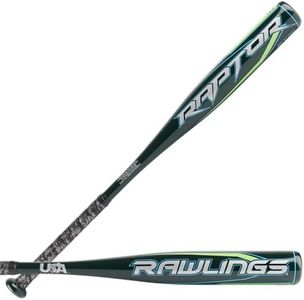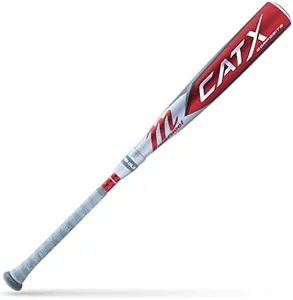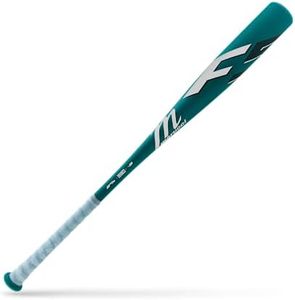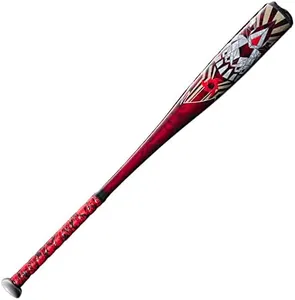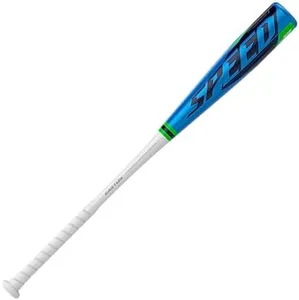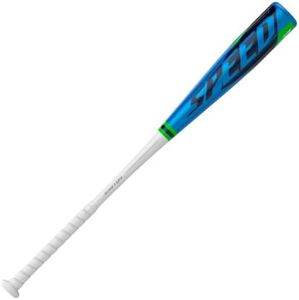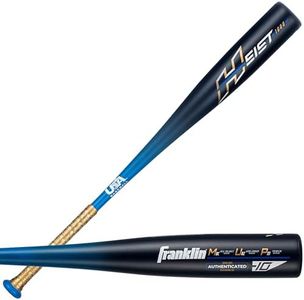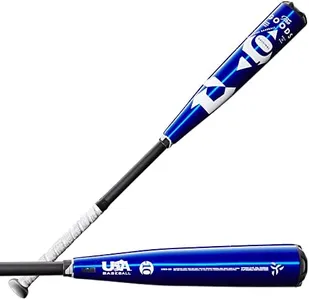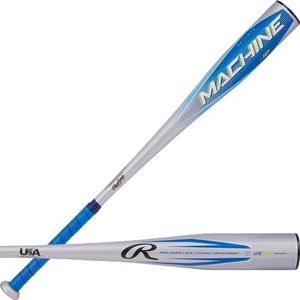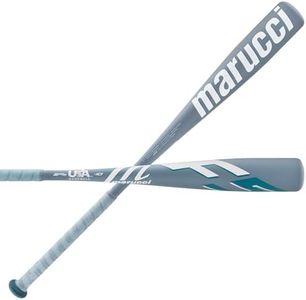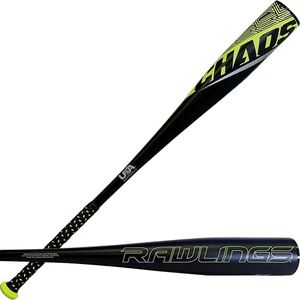We Use CookiesWe use cookies to enhance the security, performance,
functionality and for analytical and promotional activities. By continuing to browse this site you
are agreeing to our privacy policy
10 Best Youth Big Barrel Bats
From leading brands and best sellers available on the web.Buying Guide for the Best Youth Big Barrel Bats
Choosing the right youth big barrel bat is important for both performance and enjoyment of the game. When picking a bat, you want something that suits the player’s age, size, skill level, and the rules of their league. Each specification of a bat affects how easy it is to swing, how much control the player has, and how well they can hit the ball, so taking the time to understand these specs will help you make a choice that boosts confidence at the plate and aids in developing good batting habits.LengthThe length of a youth big barrel bat is the measurement from the knob to the end of the barrel, usually given in inches. Length affects both reach and swing control. Shorter bats give players better control and quicker swings, making them suitable for younger or smaller players. Longer bats provide greater reach but can be harder to control for those who don't have enough strength. The right length is usually found by considering the player’s height and age — as a general approach, younger and shorter players benefit from shorter bats, while older and taller players can handle longer bats. If a bat feels unwieldy or difficult to swing, it's likely too long.
Weight (and Drop Weight)The weight of a bat is how heavy it is to swing, given in ounces. Drop weight is a term that indicates the difference between the length and the weight (length in inches minus weight in ounces). For example, a 30-inch bat weighing 20 ounces has a drop of -10. Lower drop weights (like -8) mean a heavier bat and are better suited to stronger, more experienced players. Higher drops (like -10 or -12) make for lighter bats, helping younger players swing faster and with better control. The right weight will let the player swing quickly without sacrificing balance or form — if it feels too heavy at the end of a swing, it’s probably too much.
Barrel DiameterBarrel diameter refers to the thickness of the widest part of the bat, usually between 2 5/8 and 2 3/4 inches for big barrel bats. A bigger barrel offers a larger sweet spot, making it easier to make solid contact with the ball. However, a thicker barrel can also slightly increase weight, which might make it harder for very young players to control. For most youth leagues, the barrel size is regulated, so always check league requirements. Most players enjoy the benefit of a big barrel, but smaller or less experienced kids might want the smallest allowed size for easier handling.
MaterialYouth big barrel bats are commonly made from alloy, composite, or wood. Alloy bats are durable, often cheaper, and ready to use out of the wrapper, making them reliable for everyday play. Composite bats can be lighter and offer a bigger sweet spot with less vibration, but they can be more expensive and sometimes require a break-in period before reaching peak performance. Wood bats offer a traditional feel but can break more easily and are heavier. Your choice should depend on the player's preference, local rules, and whether comfort, power, or durability is most important to you.
CertificationCertification refers to the approval stamp from organizations like USSSA or USA Baseball, indicating the bat meets league safety and performance standards. Not all bats are legal in every league, so checking which certification your league requires is essential. Certified bats ensure a fair and safe playing field — using a non-approved bat can lead to disqualification from games. The main thing to consider is the league's rules — always check before buying so the bat is allowed in play.
GripThe grip is the tape or material wrapped around the handle of the bat, providing comfort and minimizing sting from mishits. Soft, cushioned grips are best for beginners as they help absorb shock and make the bat easier and more comfortable to hold. Some players prefer thinner grips for closer connection to the bat. Think about whether the player values comfort or a firm feel; sweaty hands or sensitivity to vibration may benefit from a thicker, tackier grip.
